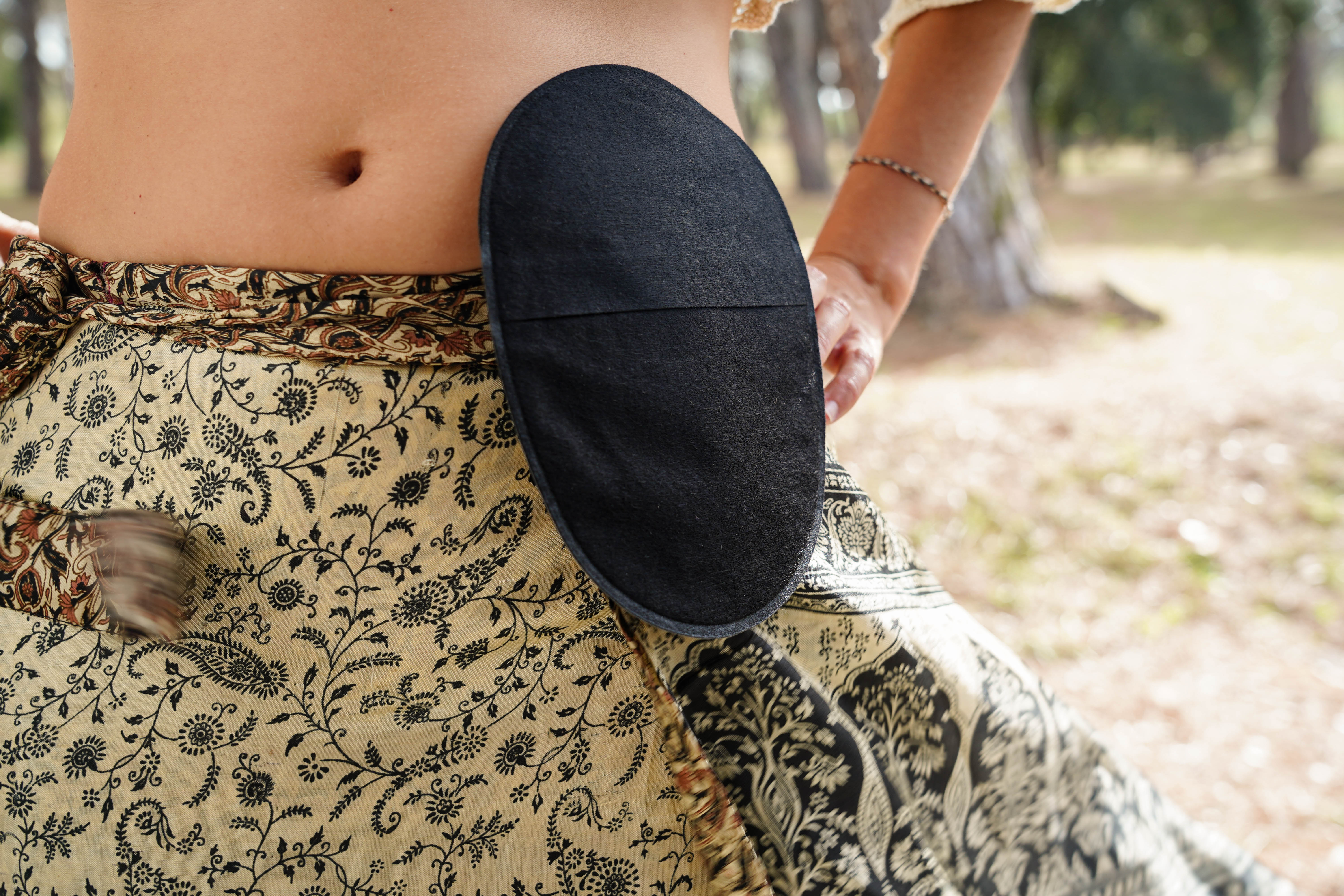Three Tips to Prevent Stoma Noise
Posted by Renee Reintzel on Nov 18th 2025

How to Manage Your Stoma Noise and Odor
After ostomy surgery, you might expect your entire digestive experience to change. Fortunately (or unfortunately), most aspects of digestion and elimination stay the same. You still experience gas build up in your gastrointestinal tract, which needs to be released. Since your stoma does not have a sphincter, you do not have the same level of control that you used to over the release of gas. For the first few months after ostomy surgery, you may experience more gas, stoma gurgling, and more frequent output than you will experience after your stoma has healed.
Remember, releasing gas is a normal part of a healthy body. Everybody toots! If you are self-conscious about stoma noise management, there are a few things you can do to help muffle, reduce, or avoid stoma noise.
1. Reduce intake of foods and beverages that cause excessive gas
Some foods and beverages we consume creates more gas than others, including:
- Beans and lentils
- Cabbage, broccoli, cauliflower, bok choy and Brussels sprouts
- Bran
- Dairy products containing lactose
- Fructose (found in some fruits and used as a sweetener in some products)
- Sorbitol (a sugar substitute found in some products)
- Carbonated beverages
Diets that create extra gas may be contributing to a noisy stoma or what sounds like stoma gurgling. If you love these foods, try cooking them to reduce their gas producing effects. Baking, steaming, sautéing, or grilling your veggies (as opposed to eating them raw) helps to pre-digest some of the biggest gas-producing ingredients in your veggies—starch and fiber.
Presoaking beans before cooking them can also help reduce gas buildup. According to the Mayo Clinic legume guide, boiling beans for two to three minutes and then covering for an overnight soak can result in 75 to 90 percent of the indigestible sugars being dissolved into the water. After soaking, drain the water, rinse the beans, and cook in fresh water to reduce gas production.
If you love these foods too much to change the way you eat, you can also wait until you are home to enjoy your favorite gassy snack!
Certain foods and beverages can create more gas during digestion, but so can the way you eat. Chewing gum, drinking through a straw, smoking, and drinking carbonated beverages of any type all add air to your digestive tract. If carbonated beverages are one of your go-to’s, consider pouring yourself a glass and allowing it to sit for a few minutes to reduce carbonation.
2. Ask your doctor about using an anti-gas medication
Any over-the-counter medication with simethicone in it is useful for relieving gas. While simethicone doesn’t prevent gas, it helps treat the symptoms of gas such as feeling full, abdominal pressure, and bloating. Gas-X is a common medication that contains simethicone.
How does it work? Simethicone is a silicone compound that decreases the surface tension of gas bubbles in the GI tract. This results in gas bubbles coalescing, accumulating, and moving either upward or downward through the GI tract to be dispersed more easily and quickly via mouth, anal sphincter or stoma. Simethicone does not appear to reduce the actual production of gas in the GI tract or inhibit conditions that can increase gas production, such as lactose intolerance or medication side effects.
Medications like Beano, on the other hand, help prevent the production of gas before it starts. Beano contains a naturally-sourced enzyme that works with your body’s digestion. It is meant to be taken before food and functions by breaking down the complex carbohydrates found in gassy foods into simpler, easily digestible sugars before they reach the colon. This prevents the production of gas before it starts.
3. Products to help quiet the noise (and odors) coming from your stoma
Although diet management and medication can reduce gas production and output, gas is still a part of a normal, healthy digestive tract. Fortunately, there are ways to help muffle any noises your stoma does make. Here is a wide range of stoma care products to help with stoma noise management:
Wearing a tighter layer of clothing or a shapewear undergarment (like Spanx) can muffle the sounds of a noisy stoma. If you begin to feel a buildup of gas, pressing your hand firmly over your stoma can physically muffle any sounds. There are also some products on the market specifically designed for muffling stoma noise and/or reducing odor.
The Stoma Stifler describes itself as a “noise suppression and stoma guard” product. A shallow, inverted polyurethane cup snaps over your stoma with a soft belt, keeping sounds inside. The cup is flexible and discreet, conforming to individual body shapes without touching the stoma, and allowing soft and moderately firm stool to pass beneath the flexible perimeter to the pouch underneath.
Using a stoma belt can also help minimize unwanted noise by holding your ostomy pouch securely against your body, reducing movement and softening any sounds caused by shifting gas. While a belt won’t stop gas from passing through the stoma, the gentle support can prevent ballooning and offer a smoother, more discreet fit under clothing. Many people find that wearing a belt provides extra confidence in social settings, especially when combined with good pouch filters and mindful food choices.
The Coloplast Brava Ostomy Support Belt is a wide, soft, stretchy piece of fabric that provides comfortable support and a streamlined under-clothes look. It can be used on top of your pouch or with an individualized hole for your pouching system to pass through. When used over your pouch, the stretchy belt provides an additional layer of fabric to help muffle stoma noise. It may also help prevent post-operative hernias, in combination with exercise.
One way on How to Relieve Gas With an Ostomy:
Replacement filters can also be helpful for stoma noise management and odor. A fresh filter allows gas to vent slowly and evenly from the pouch, reducing ballooning and preventing pressure buildup that can lead to louder sounds. Many filters also contain activated charcoal, which helps neutralize odors as gas passes through. While filters aren’t a perfect solution—especially if your output is very liquid—they can make a noticeable difference in day-to-day comfort.
While some intestinal gas is odorless, some intestinal gas has odor. Both are natural and should be expected. The products below can help ostomates self-conscious about odor (both from gas and stool):
- Devrom Deodorant Chewable Tablets: an inexpensive and fast-acting flatulence deodorizer; remedy for intestinal gas odor.
- Fortis Entrust Ostomy Odor Eliminating Drops: unscented, odorless liquid deodorant eliminates ostomy odor while lubricating pouch for easy draining. Specially formulated to be gentle to the stoma and tissue.
- DevKo Deodorant Tablets for Ostomy Appliances: ideal for liquid stoma output, these deodorant tablets can be dropped into ostomy pouches for no-fuss odor elimination.
- Hollister m9 Odor Eliminator Spray: an unscented spray that effectively and safely neutralizes unpleasant odors near you or in your home.
For all your ostomy needs and stoma care products, go to MyCareSupplies.com

